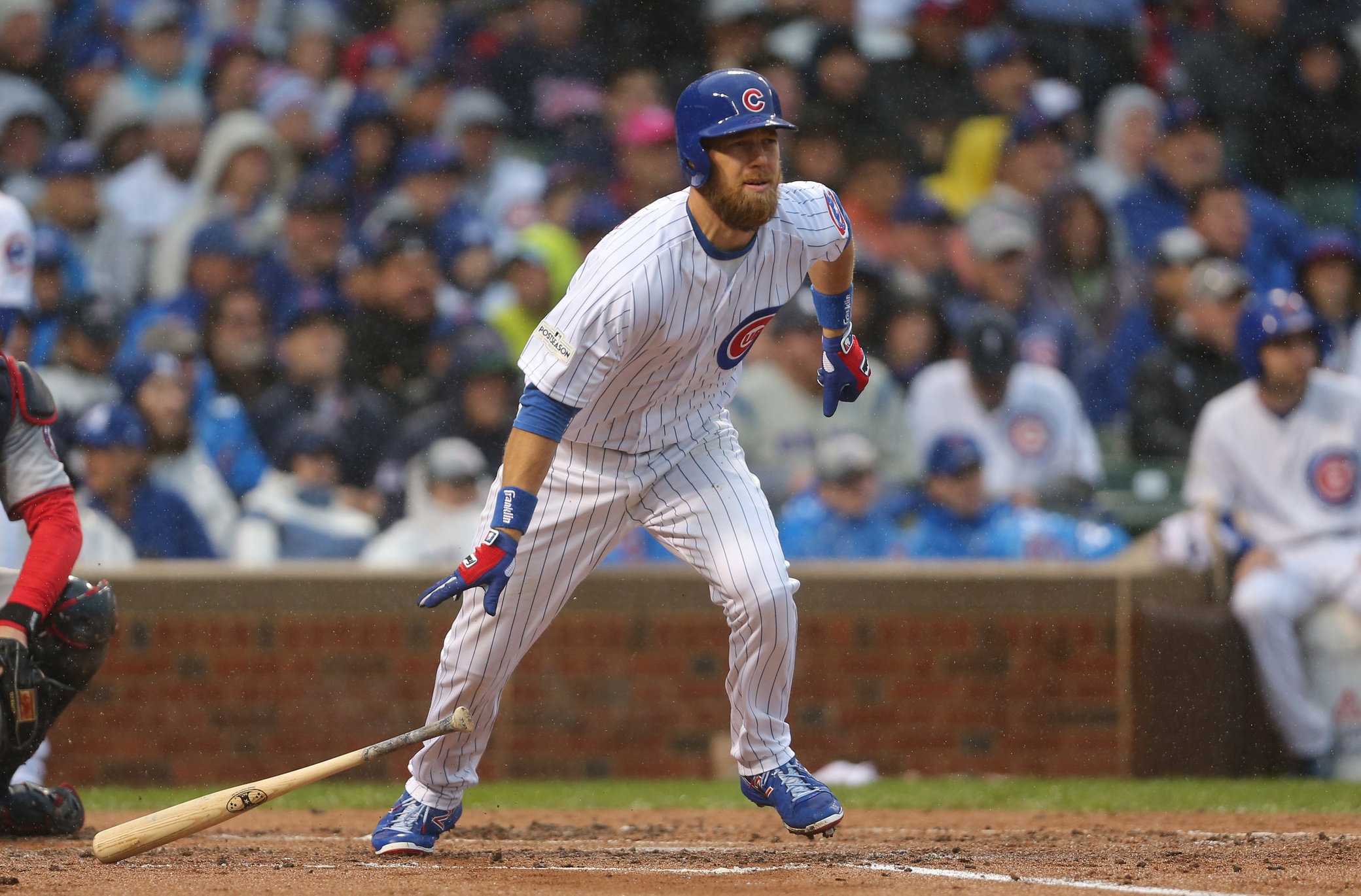Position: 2B/RF/LF
2017 Stats:
| Avg. | OBP | SLG | HR | TAv | wRC+ | FRAA | WARP |
| .232 | .318 | .375 | 12 | .249 | 82 | -2.8 | 0.2 |
Year in Review:
In March, Ken Schultz wrote a piece about Ben Zobrist’s aging curve. In it, he looked at historical comparisons for elite-level second basemen and at what point in their careers their production fell off the table. Even greats such as Chase Utley and Ryne Sandberg fell off around the time of their age-36 seasons, and so Schultz cautioned the Cubs to watch Zobrist’s production and usage closely this year and going forward.
And Zobrist’s decline really did seem to hit in 2017. This was the first year since 2010 that Zobrist failed to put up at least 3 WARP, the end of a run which established him as one of the best players of this decade. Since his breakout season at age 28 in 2009, Zobrist had been on a seemingly never-ending hot streak, but this year he quietly had a worse offensive season that the much-maligned Jason Heyward.
A wrist injury nagged Zobrist through much of the first half of the season, and when he returned he never seemed to totally get it together, particularly from the right side of the plate. Zobrist hit only .179 with one home run as a righty this year, as opposed to .249 with 11 homers from the left side. This does suggest that the injury affected his production, because those splits are the reverse of his usual outcome (he’s historically hit .284 from the right side and .254 from the left), and it does make sense that a wrist injury would affect one side of the plate disproportionately for a switch hitter. But even so, the production from the left side was down too, and even as he continued to get at-bats in the middle of the Cubs’ lineup, it just didn’t look like the same old Zobrist.
Some of fans’ frustration at Zobrist’s usage boiled over in the postseason, as Joe Maddon continued to use Zobrist heavily, and as Zobrist continued to struggle while the likes of Albert Almora Jr., Ian Happ, and Tommy La Stella sat on the bench. Zobrist went 4-for-26 in October and has been pointed to as perhaps the best example of Maddon’s reluctance to adjust his offensive approach game-to-game.
Those are the negatives from 2017, but there are some ways that Zobrist was still an interesting cog in this lineup this year. He had an 87 percent contact rate when he swung this year, which was above his career average, and which is well-above league average. His strikeout rate ticked up slightly to 14.3 percent, but that’s still very, very good as well. In a lineup where contact can sometimes be fleeting, this twist is intriguing, and it’s always been Maddon’s favorite reason for having Zobrist in the middle of the lineup. At the very least, the Cubs can still rely on Zobrist to put the ball in play. His on-base percentage was a career-low .318, but he did still walk more than 10 percent of the time, something he’s done every year he’s been in the league.
On the defensive side, Zobrist is actually hanging in there much better than I’d expect. He got an undeserved Gold Glove nomination, but it is true that he was solid at second base this year, and his ability to play serviceable outfield is still intact. This versatility was his main value-add for the Cubs this season, and will continue to be going forward.
Looking Ahead:
The Cubs have Zobrist under contract through 2019, so he will still be a contributor for the foreseeable future. He isn’t a star anymore, but a player with his versatility and skill set can still be very useful—if he’s deployed the right way. The Cubs’ young depth shouldn’t be treated just as depth forever, and Joe Maddon will have to figure out how to deploy Zobrist correctly to maximize his value going forward. Given how this season turned out, it doesn’t seem to make sense for players like Happ to be losing many at-bats to Zobrist, but depending on how his wrist heals, it might very well make sense for Zobrist to platoon with Heyward in right or Javier Baez at second (or a little of both).
The dropoff from 2016 to 2017 was precipitous, and given his consistency over the last decade, I’d expect something of a bounce-back from Zobrist in 2018. The contact and on-base skills are still there, and if he’s fully healthy and able to both switch positions and switch-hit, he’ll still be a very useful player for the Cubs next year. It will be very interesting to see if Maddon cuts back on and tailors his usage in 2018, and, if so, what that looks like. It could be as a platoon partner, it could be as a contact-oriented pinch hitter, or, if his playoff usage is any indication, it very well could continue to look like what it did in 2017: an everyday player.
The 2017 season was the first time in a long time that Zobrist gave Maddon or baseball fans a different output than expected. Now the question is how much the Cubs and Zobrist should react and adjust. At age 37, Zobrist will have less and less room for error, but he still isn’t someone I’d bet against short-term.
Lead photo courtesy Dennis Wierzbicki—USA Today Sports
